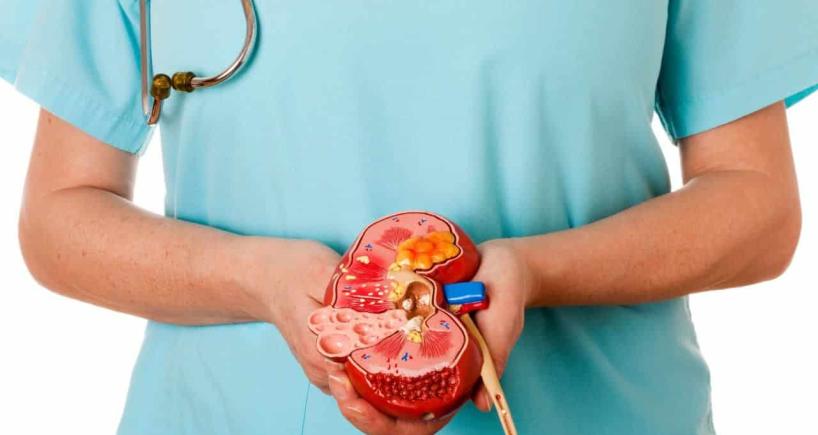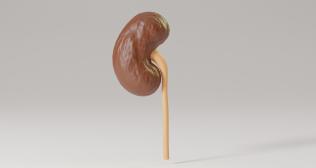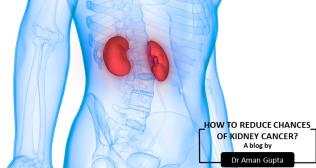
Kidney Stones: Causes, Symptoms, Diagnosis & Treatment
Kidney stone problem is prevalent in North India and that’s why North India is known as stone belt. As a responsible urologist, it's imperative to shed light on this condition.
Causes and Risk Factors of Kidney Stones:
When certain substances in urine, such as calcium, oxalate, and uric acid, become highly concentrated, or certain protective substances like citrate, and magnesium are reduced, it leads to crystal formation. Several factors contribute to this, including dehydration, dietary habits rich in oxalate and salt, obesity, family history, and certain medical conditions like hyperparathyroidism or urinary tract infections.
Symptoms of Kidney Stones:
Stones lying in the corner of the kidneys do not cause any pain but in self-removal when they get stuck in the ureter, they cause mild to severe pain from loin to groin and may cause difficulty or blood in urination.
Diagnosis of Kidney Stones:
Ultrasound is easy & cost-effective in diagnosing the condition, but it is not at all accurate. The important finding to see on ultrasound is swelling (hydronephrosis) in the kidney as it is because of a stone stuck in the ureter. Non-contrast CT-scan provide accurate diagnosis. Urine test shows the presence of blood cells (RBCs).
Treatment Options for Kidney Stones:
The majority (90%) of small stones (<4 mm) pass on their own and some medications help to fasten this process of self-removal. However, as the size increases, the chance of self-removal decreases. Stones of >6 mm in size usually require a Urologist's help for their removal.
Medications are usually effective for small stones (<6mm) but waiting more than 2 weeks is not advisable as it may damage the kidney. Believing that medicine can dissolve or break the stone is a myth. All the medications which are in vogue for treatment are actually effective in prevention of stone as they can avoid crystal formation or precipitation. Following stone size on ultrasound using these medications is not scientifically advisable as ultrasound size is variable and inaccurate. False satisfaction sometimes leads to damage to the kidney.
At Fortis Hospital, Noida, Stones are usually removed by minimal invasive advanced high-power LASER techniques. Stones in the ureter are usually removed by URS using LASER. It does not involve any cut and is done through urethral opening. Small stones (<1-2 cm) in the kidney are also removed through the urethra using the Flexible URS (RIRS) technique. Large stones in the kidney are now usually removed through very small 4-5 mm punctures using the MINI-PCNL technique. All these procedures usually require single-day admission. Stone in abnormal kidneys (horseshoe, ectopic) are removed by Robotic-assisted laparoscopic surgery using the latest & advanced Da-Vinci Xi Robot system.
Prevention & Lifestyle Modifications:
There is usually a>50% chance of recurrence of the stone. Lifestyle modifications are essential to prevent recurrence. This includes maintaining adequate hydration by drinking around 3 liters of water to maintain urine dilution, following a balanced diet rich in citrus fruits, low in salt and oxalate (nuts & chocolates), and regular exercise. Some medications are advised by urologist to reduce the chances of stone recurrence. Metabolic work-ups (special urine tests) are required in patients suffering from a frequent recurrence of stones, stones in both kidneys, or children with stones.
Conclusion:
Kidney stone disease is a common problem and can cause severe pain and if untreated can lead to kidney damage and severe life-threatening infection. Timely intervention on urologist advice is the key. At Fortis Hospital, Noida using minimal invasive advanced high-power LASER and the latest Da Vinci Xi ROBOTIC techniques, we can provide easy and fast solutions to suffering individuals.
Categories
Clear allMeet the doctor

- Urology | Urology | Paediatric Urology | Uro-Oncology | Kidney Transplant | Robotic Surgery
-
26 Years
-
1200



















